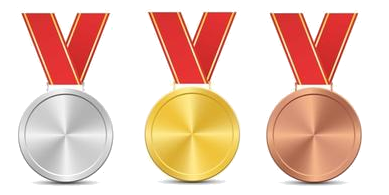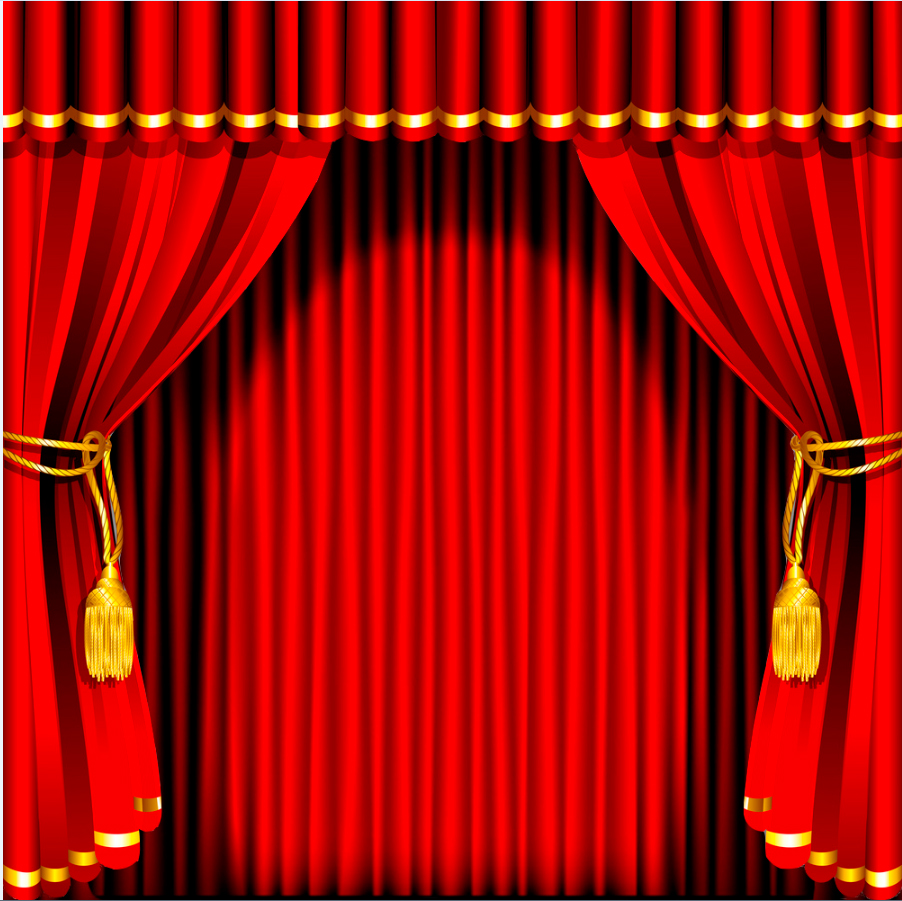
English Encyclopedia
 United Kingdom
United Kingdom

The North Atlantic Current (NAC), also known as North Atlantic Drift and North Atlantic Sea Movement, is a powerful warm western boundary current within the Atlantic Ocean that extends the Gulf Stream northeastward.[1]
The NAC originates from where the Gulf Stream turns north at the Southeast Newfoundland Rise, a submarine ridge that stretches southeast from the Grand Banks of Newfoundland. The NAC flows northward east of the Grand Banks, from 40°N to 51°N, before turning sharply east to cross the Atlantic. It transports more warm tropical water to northern latitudes than any other boundary current; more than 40 Sv (40 million m3/s, 1.4 billion cu ft/s) in the south and 20 Sv (20 million m3/s, 710 million cu ft/s) as it crosses the Mid-Atlantic Ridge. It reaches speeds of 2 knots (3.7 km/h; 2.3 mph) near the North American coast. Directed by topography, the NAC meanders heavily, but in contrast to the meanders of the Gulf Stream, the NAC meanders remain stable without breaking off into eddies.[1]
The colder parts of the Gulf Stream turn northward near the "tail" of the Grand Banks at 50°W where the Azores Current branches off to flow south of the Azores. From there the NAC flows northeastward, east of the Flemish Cap (47°N, 45°W). Approaching the Mid-Atlantic Ridge, it then turns eastward and becomes much broader and more diffuse. It then splits into a colder northeastern branch and a warmer eastern branch. As the warmer branch turns southward, most of the subtropical component of the Gulf Stream is diverted southward, and as a consequence, the North Atlantic is mostly supplied by subpolar waters, including a contribution from the Labrador Current recirculated into the NAC at 45°N.[2]
West of Continental Europe, it splits into two major branches. One branch goes southeast, becoming the Canary Current as it passes northwest Africa and turns southwest. The other major branch continues north along the coast of Northwestern Europe. Other branches include the Irminger Current and the Norwegian Current. Driven by the global thermohaline circulation, the North Atlantic Current is part of the wind-driven Gulf Stream, which goes further east and north from the North American coast across the Atlantic and into the Arctic Ocean.
The North Atlantic Current, together with the Gulf Stream, have a long-lived reputation for having a considerable warming influence on European climate. However, the principal cause for differences in winter climate between North America and Europe seems to be winds rather than ocean currents (although the currents do exert influence at very high latitudes by preventing the formation of sea ice).

The Palace of Westminster serves as the meeting place for both the House of Commons and the House of Lords, the two houses of the Parliament of the United Kingdom. Informally known as the Houses of Parliament after its occupants, the Palace lies on the north bank of the River Thames in the City of Westminster, in central London, England.
Its name, which derives from the neighbouring Westminster Abbey, may refer to several historic structures but most often: the Old Palace, a medieval building-complex largely destroyed by fire in 1834, or its replacement, the New Palace that stands today. The palace is owned by the monarch in right of the Crown and, for ceremonial purposes, retains its original status as a royal residence. Committees appointed by both houses manage the building and report to the Speaker of the House of Commons and to the Lord Speaker.
The first royal palace constructed on the site dated from the 11th century, and Westminster became the primary residence of the Kings of England until fire destroyed the royal apartments in 1512 (after which, the nearby Palace of Whitehall was established). The remainder of Westminster continued to serve as the home of the Parliament of England, which had met there since the 13th century, and also as the seat of the Royal Courts of Justice, based in and around Westminster Hall. In 1834 an even greater fire ravaged the heavily rebuilt Houses of Parliament, and the only significant medieval structures to survive were Westminster Hall, the Cloisters of St Stephen's, the Chapel of St Mary Undercroft, and the Jewel Tower.
In the subsequent competition for the reconstruction of the Palace, the architect Charles Barry won with a design for new buildings in the Gothic Revival style, specifically inspired by the English Perpendicular Gothic style of the 14th–16th centuries. The remains of the Old Palace (except the detached Jewel Tower) were incorporated into its much larger replacement, which contains over 1,100 rooms organised symmetrically around two series of courtyards and which has a floor area of 112,476 m2 (1,210,680 sq ft).[1] Part of the New Palace's area of 3.24 hectares (8 acres) was reclaimed from the River Thames, which is the setting of its nearly 300-metre long (980 ft) façade,[1] called the River Front. Augustus Pugin, a leading authority on Gothic architecture and style, assisted Barry and designed the interior of the Palace. Christian themes were integrated into the design.[3] Construction started in 1840 and lasted for 30 years, suffering great delays and cost overruns, as well as the death of both leading architects; works for the interior decoration continued intermittently well into the 20th century. Major conservation work has taken place since then to reverse the effects of London's air pollution, and extensive repairs followed the Second World War, including the reconstruction of the Commons Chamber following its bombing in 1941.
The Palace is one of the centres of political life in the United Kingdom; "Westminster" has become a metonym for the UK Parliament and the British Government, and the Westminster system of government commemorates the name of the palace. The Elizabeth Tower, in particular, often referred to by the name of its main bell, Big Ben, has become an iconic landmark of London and of the United Kingdom in general, one of the most popular tourist attractions in the city, and an emblem of parliamentary democracy. Tsar Nicholas I of Russia called the new palace "a dream in stone".[4][5] The Palace of Westminster has been a Grade I listed building since 1970 and part of a UNESCO World Heritage Site since 1987.

Portsmouth (/ˈpɔːrtsməθ/ ( listen) PORTS-məth) is a port and island city with unitary authority status in the ceremonial county of Hampshire, southern England. It is the most densely populated city in the United Kingdom, with a population last recorded at 238,800. Portsmouth is the only island-city in the United Kingdom. The city forms part of the South Hampshire built-up area, which also incorporates Southampton, Havant, Waterlooville, Eastleigh, Fareham, and Gosport. Located mainly on Portsea Island, Portsmouth is located 19 miles (31 km) south-east of Southampton and 70 miles (110 km) south-west of London.
listen) PORTS-məth) is a port and island city with unitary authority status in the ceremonial county of Hampshire, southern England. It is the most densely populated city in the United Kingdom, with a population last recorded at 238,800. Portsmouth is the only island-city in the United Kingdom. The city forms part of the South Hampshire built-up area, which also incorporates Southampton, Havant, Waterlooville, Eastleigh, Fareham, and Gosport. Located mainly on Portsea Island, Portsmouth is located 19 miles (31 km) south-east of Southampton and 70 miles (110 km) south-west of London.
The city's history can be traced to Roman times. A significant naval port for centuries, Portsmouth has the world's oldest dry dock and was England's first line of defence during the French invasion in 1545. Special Palmerston Forts were built in 1859 in anticipation of another invasion from continental Europe. By the early-19th century, Portsmouth was the most heavily fortified city in the world, and was considered "the world's greatest naval port" at the height of the British Empire throughout Pax Britannica. The world's first mass production line was set up in the city, making it the most industrialised site in the world. During the Second World War, the city was a pivotal embarkation point for the D-Day landings and was bombed extensively in the Portsmouth Blitz, which resulted in the deaths of 930 people. In 1982, the city was the main naval base for the task force in the Falklands War. Her Majesty's Yacht Britannia left the city to oversee the transfer of Hong Kong in 1997, which marked for many the end of the empire.
Portsmouth is one of the world's best known ports. HMNB Portsmouth is the largest dockyard for the Royal Navy and is home to two-thirds of the UK's surface fleet. The city is home to some famous ships, including HMS Warrior, the Tudor carrack Mary Rose and Horatio Nelson's flagship, HMS Victory (the world's oldest naval ship still in commission). The former HMS Vernon naval shore establishment has been redeveloped as a retail park known as Gunwharf Quays. Portsmouth is among the few British cities with two cathedrals: the Anglican Cathedral of St Thomas and the Roman Catholic Cathedral of St John the Evangelist. The waterfront and Portsmouth Harbour are dominated by the Spinnaker Tower, one of the United Kingdom's tallest structures at 560 feet (170 m). Nearby Southsea is a seaside resort with a pier amusement park and medieval castle.
Portsmouth F.C. is the city's professional association football club and play their home games at Fratton Park. The city has several mainline railway stations that connect to London Waterloo amongst other lines in southern England. Portsmouth International Port is a commercial cruise ship and ferry port for international destinations. The port is the second busiest in the United Kingdom after Dover, handling around three million passengers a year. The city formerly had its own airport, Portsmouth Airport, until its closure in 1973. The University of Portsmouth enrols 23,000 students and is ranked among the world's best modern universities. Portsmouth is also the birthplace of author Charles Dickens and engineer Isambard Kingdom Brunel.

The Royal Exchange in London was founded in the 16th century by the merchant Sir Thomas Gresham on the suggestion of his factor Richard Clough to act as a centre of commerce for the City of London.[1] The site was provided by the City of London Corporation and the Worshipful Company of Mercers, who still jointly own the freehold. It is trapezoidal in shape and is flanked by Cornhill and Threadneedle Street, which converge at Bank junction in the heart of the city. It lies in the ward of Cornhill.
It has twice been destroyed by fire and subsequently rebuilt. The present building was designed by Sir William Tite in the 1840s. The site was notably occupied by the Lloyd's insurance market for nearly 150 years. Today the Royal Exchange contains Fortnum & Mason The Bar & Restaurant, luxury shops, and offices.
Traditionally, the steps of the Royal Exchange are the place where certain royal proclamations (such as the dissolution of parliament) are read out by either a herald or a crier. Following the death or abdication of a monarch and the confirmation of the next monarch's accession to the throne by the Accession Council, the Royal Exchange Building is one of the locations where a herald proclaims the new monarch's reign to the public.

The Royal Opera House (ROH) is an opera house and major performing arts venue in Covent Garden, central London. The large building is often referred to as simply Covent Garden, after a previous use of the site. It is the home of The Royal Opera, The Royal Ballet, and the Orchestra of the Royal Opera House. The first theatre on the site, the Theatre Royal (1732), served primarily as a playhouse for the first hundred years of its history. In 1734, the first ballet was presented. A year later, the first season of operas, by George Frideric Handel, began. Many of his operas and oratorios were specifically written for Covent Garden and had their premieres there.
The current building is the third theatre on the site, following disastrous fires in 1808 and 1856 to previous buildings.[2] The façade, foyer, and auditorium date from 1858, but almost every other element of the present complex dates from an extensive reconstruction in the 1990s. The main auditorium seats 2,256 people, making it the third largest in London, and consists of four tiers of boxes and balconies and the amphitheatre gallery. The proscenium is 14.80 m wide and 12.20 m high. The main auditorium is a Grade I listed building.
 *National Academies
*National Academies
 Royal Society
Royal Society
 International Council for Science,ICSU
International Council for Science,ICSU
 Mitgliedstaaten
Mitgliedstaaten
 United Kingdom
United Kingdom

The President, Council and Fellows of the Royal Society of London for Improving Natural Knowledge,[1] commonly known as the Royal Society, is a learned society. Founded in November 1660, it was granted a royal charter by King Charles II as "The Royal Society".[1] It is the oldest national scientific institution in the world.[2] The society is the United Kingdom's and Commonwealth of Nations' Academy of Sciences and fulfils a number of roles: promoting science and its benefits, recognising excellence in science, supporting outstanding science, providing scientific advice for policy, fostering international and global co-operation, education and public engagement.
The society is governed by its Council, which is chaired by the Society's President, according to a set of statutes and standing orders. The members of Council and the President are elected from and by its Fellows, the basic members of the society, who are themselves elected by existing Fellows. As of 2016, there are about 1,600 fellows, allowed to use the postnominal title FRS (Fellow of the Royal Society), with up to 52 new fellows appointed each year. There are also royal fellows, honorary fellows and foreign members, the last of which are allowed to use the postnominal title ForMemRS (Foreign Member of the Royal Society). The Royal Society President is Venkatraman Ramakrishnan, who took up the post on 30 November 2015.[3]
Since 1967, the society has been based at 6–9 Carlton House Terrace, a Grade I listed building in central London which was previously used by the Embassy of Germany, London.

St Pancras railway station (/ˈpæŋkrəs/), also known as London St Pancras and officially since 2007 as St Pancras International, is a central London railway terminus located on Euston Road in the London Borough of Camden. It is the terminal station for Eurostar continental services from London via High Speed 1 and the Channel Tunnel to Belgium, France and the Netherlands. It also handles East Midlands Trains and Thameslink services to Corby, Sheffield and Nottingham on the Midland Main Line and Southeastern high-speed trains to Kent via Ebbsfleet International and Ashford International, and local Thameslink cross-London services. It stands between the British Library, Regent's Canal and King's Cross railway station, sharing a London Underground station named King's Cross St. Pancras with the latter.
The station was constructed by the Midland Railway (MR), which had an extensive network across the Midlands and the North of England, but no dedicated line into London. After rail traffic problems following the 1862 International Exhibition, the MR decided to build a connection from Bedford to London with their own terminus. The station was designed by William Henry Barlow and constructed with a single-span iron roof. Following the station's opening on 1 October 1868, the MR constructed the Midland Grand Hotel on the station's façade, which has been widely praised for its architecture and is now a Grade I listed building along with the rest of the station.
By the 1960s, St Pancras was seen as redundant, with services being diverted to King's Cross and Euston. However, there was fierce opposition against proposed closures of the station and hotel and its demolition. It was reinvented in the late 20th century as the terminal of the Channel Tunnel Rail Link as part of an urban regeneration plan across East London. The complex underwent a £800 million refurbishment which was opened by Queen Elizabeth II in November 2007. A security-sealed terminal area was constructed for Eurostar services to continental Europe via High Speed 1 and the Channel Tunnel, with platforms for domestic trains to the north and south-east of England. The restored station has 15 platforms, a shopping centre, and a coach facility. St Pancras is owned by London and Continental Railways (LCR) and is managed by Network Rail (High Speed), a subsidiary of Network Rail.
 England
England
 Premier League
Premier League
 Premier League 2015/16
Premier League 2015/16
 Premier League 2016/17
Premier League 2016/17
 Premier League 2017/18
Premier League 2017/18
 Premier League 2018/19
Premier League 2018/19

 Sport
Sport
 (F)International soccer leagues
(F)International soccer leagues
 United Kingdom
United Kingdom

The Football Association (also known as The FA) is the governing body of association football in England and the Crown dependencies of Jersey, Guernsey, and the Isle of Man. Formed in 1863, it is the oldest football association in the world and is responsible for overseeing all aspects of the amateur and professional game in its territory.
The FA sanctions all competitive football matches within its remit at national level, and indirectly at local level through the county football associations. It runs numerous competitions, the most famous of which is the FA Cup. It is also responsible for appointing the management of the men's, women's, and youth national football teams.
The FA is a member of both UEFA and FIFA and holds a permanent seat on the International Football Association Board (IFAB) which is responsible for the Laws of the Game. As the first football association, it does not use the national name "English" in its title. The FA is based at Wembley Stadium, London. The FA is a member of the British Olympic Association, meaning that the FA has control over the men's and women's Great Britain Olympic football team.[1]
All of England's professional football teams are members of the Football Association. Although it does not run the day-to-day operations of the Premier League, it has veto power over the appointment of the League Chairman and Chief Executive and over any changes to league rules.[2] The English Football League, made up of the three fully professional divisions below the Premier League, is self-governing, subject to the FA's sanctions.

 History
History
 N 2000 - 2100 AD
N 2000 - 2100 AD


 IT-Times
IT-Times
 Artificial Intelligence
Artificial Intelligence


 IT-Times
IT-Times
 CAD/CAE/CAM/EDA/PDM/PLM
CAD/CAE/CAM/EDA/PDM/PLM


 IT-Times
IT-Times
 CNC
CNC


 IT-Times
IT-Times
 CRM/EAM/ERP/SRM/SCM/HCM/QM/XM/WFM
CRM/EAM/ERP/SRM/SCM/HCM/QM/XM/WFM


 IT-Times
IT-Times
 Industrial Robot
Industrial Robot


 IT-Times
IT-Times
 PLC/DCS/FCS/SCADA/MES
PLC/DCS/FCS/SCADA/MES
 United Kingdom
United Kingdom

 Science and technology
Science and technology

 Breakthrough Prize
Breakthrough Prize
 Fundamental Physics Breakthrough Prize
Fundamental Physics Breakthrough Prize

 Colleges and Universities in Europe
Colleges and Universities in Europe
 England
England
 League of European Research Universities,LERU
League of European Research Universities,LERU

 Medical, Pharmaceutical, Rehabilitation
Medical, Pharmaceutical, Rehabilitation
 Medical colleges/Research Institute
Medical colleges/Research Institute
 Nobel prize
Nobel prize
 Nobel Prize in Chemistry
Nobel Prize in Chemistry
 Nobel prize
Nobel prize
 Nobel Peace Prize
Nobel Peace Prize
 Nobel prize
Nobel prize
 Nobel Prize in Literature
Nobel Prize in Literature
 Nobel prize
Nobel prize
 Nobel Prize in Physics
Nobel Prize in Physics
 Nobel prize
Nobel prize
 Nobel Prize in Physiology or Medicine
Nobel Prize in Physiology or Medicine
 Nobel prize
Nobel prize
 Nobel Memorial Prize in Economic Sciences
Nobel Memorial Prize in Economic Sciences
 Nobel prize
Nobel prize
 University/Institute
University/Institute
 Russell Group
Russell Group
 Sinology
Sinology
 Universities in the UK
Universities in the UK
 United Kingdom
United Kingdom

 Science and technology
Science and technology
 *World famous research institutions
*World famous research institutions


The University of Cambridge is a collegiate research university in Cambridge, United Kingdom. Founded in 1209[9] and granted a royal charter by Henry III in 1231, Cambridge is the second-oldest university in the English-speaking world and the world's fourth-oldest surviving university.[10] The university grew out of an association of scholars who left the University of Oxford after a dispute with the townspeople.[11] The two English ancient universities share many common features and are often jointly referred to as Oxbridge. Cambridge is ranked among the most prestigious universities in the world.
Cambridge is formed from a variety of institutions which include 31 semi-autonomous constituent colleges and over 150 academic departments, faculties and other institutions organised into six schools. All the colleges are self-governing institutions within the university, each controlling its own membership and with its own internal structure and activities. All students are members of a college. The university does not have a main campus, and its colleges and central facilities are scattered throughout the city. Undergraduate teaching at Cambridge centres on weekly small-group supervisions in the colleges in groups of typically 1–4 students. This intensive method of teaching is widely considered the 'jewel in the crown' of an Oxbridge undergraduate education.[12][13][14][15][16] In addition, lectures, seminars, laboratory work and occasionally further supervisions are provided by the central university faculties and departments. Postgraduate teaching is provided predominantly centrally.
Cambridge University Press & Assessment combines the oldest university press in the world with one of the world's leading examining bodies, which provides assessment to over eight million learners globally every year. The university also operates eight cultural and scientific museums, including the Fitzwilliam Museum, as well as a botanic garden. Cambridge's libraries, of which there are over 100, hold a total of around 16 million books, around nine million of which are in Cambridge University Library, a legal deposit library. The university is home to, but independent of, the Cambridge Union – the world's oldest debating society. The university is closely linked to the development of the high-tech business cluster known as 'Silicon Fen', the largest technology cluster in Europe.[17] It is the central member of Cambridge University Health Partners, an academic health science centre based around the Cambridge Biomedical Campus.
By endowment size, Cambridge is the wealthiest university in Europe.[18][19] In the fiscal year ending 31 July 2019, the central university, excluding colleges, had a total income of £2.192 billion, of which £592.4 million was from research grants and contracts.[4] At the end of the same financial year, the central university and colleges together possessed a combined endowment of over £7.1 billion and overall consolidated net assets (excluding 'immaterial' historical assets) of over £12.5 billion.[20] A member of numerous associations and part of the 'golden triangle' of English universities, Cambridge has educated many notable alumni, including eminent mathematicians, scientists, politicians, lawyers, philosophers, writers and actors. As of October 2020, 121 Nobel laureates, 11 Fields Medalists, 7 Turing Award winners, 47 heads of state, and 14 British prime ministers have been affiliated with Cambridge as students, alumni, faculty or research staff.[21] As of 2016, University alumni had won 194 Olympic medals.
 Breakthrough Prize
Breakthrough Prize
 Fundamental Physics Breakthrough Prize
Fundamental Physics Breakthrough Prize

 Colleges and Universities in Europe
Colleges and Universities in Europe
 England
England
 Europaeum
Europaeum
 League of European Research Universities,LERU
League of European Research Universities,LERU

 Medical, Pharmaceutical, Rehabilitation
Medical, Pharmaceutical, Rehabilitation
 Medical colleges/Research Institute
Medical colleges/Research Institute
 Nobel prize
Nobel prize
 Nobel Prize in Chemistry
Nobel Prize in Chemistry
 Nobel prize
Nobel prize
 Nobel Peace Prize
Nobel Peace Prize
 Nobel prize
Nobel prize
 Nobel Prize in Literature
Nobel Prize in Literature
 Nobel prize
Nobel prize
 Nobel Prize in Physics
Nobel Prize in Physics
 Nobel prize
Nobel prize
 Nobel Prize in Physiology or Medicine
Nobel Prize in Physiology or Medicine
 Nobel prize
Nobel prize
 Nobel Memorial Prize in Economic Sciences
Nobel Memorial Prize in Economic Sciences
 Nobel prize
Nobel prize
 University/Institute
University/Institute
 Russell Group
Russell Group
 Sinology
Sinology
 Universities in the UK
Universities in the UK
 United Kingdom
United Kingdom

 Science and technology
Science and technology
 *World famous research institutions
*World famous research institutions
The University of Oxford is a collegiate research university in Oxford, England. There is evidence of teaching as far back as 1096,[2] making it the oldest university in the English-speaking world and the world's second-oldest university in continuous operation.[2][12] It grew rapidly from 1167 when Henry II banned English students from attending the University of Paris.[2] After disputes between students and Oxford townsfolk in 1209, some academics fled north-east to Cambridge where they established what became the University of Cambridge.[13] The two "ancient universities" are frequently jointly referred to as "Oxbridge". The history and influence of the University of Oxford has made it one of the most prestigious universities in the world.[14][15]
The university is made up of 38 constituent colleges, and a range of academic departments which are organised into four divisions.[16] All the colleges are self-governing institutions within the university, each controlling its own membership and with its own internal structure and activities.[17] It does not have a main campus, and its buildings and facilities are scattered throughout the city centre. Undergraduate teaching at Oxford is organised around weekly tutorials at the colleges and halls, supported by classes, lectures, seminars, and laboratory work provided by university faculties and departments; some postgraduate teaching includes tutorials organised by faculties and departments. It operates the world's oldest university museum, as well as the largest university press in the world[18] and the largest academic library system nationwide.[19] The university is consistently cited as among the world's best.[20][21]
Oxford has educated many notable alumni, including 29 Nobel laureates, 27 prime ministers of the United Kingdom and many heads of state and government around the world.[22] As of 2017, 69 Nobel Prize winners, 3 Fields Medalists, and 6 Turing Award winners have studied, worked, or held visiting fellowships at the University of Oxford. Its alumni have won 160 Olympic medals.[23] Oxford is the home of the Rhodes Scholarship, one of the world's oldest international scholarships.[24]

 Architecture
Architecture
 Neo-Gothic architecture
Neo-Gothic architecture

 Architecture
Architecture
 Neo-Romanesque architecture
Neo-Romanesque architecture
 England
England
 United Kingdom
United Kingdom
 Windsor Castle
Windsor Castle


Windsor Castle is a royal residence at Windsor in the English county of Berkshire. It is strongly associated with the English and succeeding British royal family, and embodies almost a millennium of architectural history.
The original castle was built in the 11th century after the Norman invasion of England by William the Conqueror. Since the time of Henry I (who reigned 1100–1135), it has been used by the reigning monarch and is the longest-occupied palace in Europe. The castle's lavish early 19th-century state apartments were described by early 20th century art historian Hugh Roberts as "a superb and unrivalled sequence of rooms widely regarded as the finest and most complete expression of later Georgian taste".[4] Inside the castle walls is the 15th-century St George's Chapel, considered by the historian John Martin Robinson to be "one of the supreme achievements of English Perpendicular Gothic" design.[5]
Originally designed to protect Norman dominance around the outskirts of London and oversee a strategically important part of the River Thames, Windsor Castle was built as a motte-and-bailey, with three wards surrounding a central mound. Gradually replaced with stone fortifications, the castle withstood a prolonged siege during the First Barons' War at the start of the 13th century. Henry III built a luxurious royal palace within the castle during the middle of the century, and Edward III went further, rebuilding the palace to make an even grander set of buildings in what would become "the most expensive secular building project of the entire Middle Ages in England".[6] Edward's core design lasted through the Tudor period, during which Henry VIII and Elizabeth I made increasing use of the castle as a royal court and centre for diplomatic entertainment.
Windsor Castle survived the tumultuous period of the English Civil War, when it was used as a military headquarters by Parliamentary forces and a prison for Charles I. At the Restoration of the monarchy in 1660, Charles II rebuilt much of Windsor Castle with the help of the architect Hugh May, creating a set of extravagant Baroque interiors. After a period of neglect during the 18th century, George III and George IV renovated and rebuilt Charles II's palace at colossal expense, producing the current design of the state apartments, full of Rococo, Gothic and Baroque furnishings. Queen Victoria made a few minor changes to the castle, which became the centre for royal entertainment for much of her reign. Windsor Castle was used as a refuge by the royal family during the Luftwaffe bombing campaigns of the Second World War and survived a fire in 1992. It is a popular tourist attraction, a venue for hosting state visits, and has been the main residence of Queen Elizabeth II since 2011.
Windsor Castle grounds cover 52,609 square metres (13.000 acres)[8] and combines the features of a fortification, a palace, and a small town.[9] The present-day castle was created during a sequence of phased building projects, culminating in the reconstruction work after a fire in 1992.[10] It is in essence a Georgian and Victorian design based on a medieval structure, with Gothic features reinvented in a modern style. Since the 14th century, architecture at the castle has attempted to produce a contemporary reinterpretation of older fashions and traditions, repeatedly imitating outmoded or even antiquated styles.[11] As a result, architect Sir William Whitfield has pointed to Windsor Castle's architecture as having "a certain fictive quality", the Picturesque and Gothic design generating "a sense that a theatrical performance is being put on here", despite late 20th century efforts to expose more of the older structures to increase the sense of authenticity.[12] Although there has been some criticism, the castle's architecture and history lends it a "place amongst the greatest European palaces".
11th and 12th centuries
Windsor Castle was originally built by William the Conqueror in the decade after the Norman conquest of 1066.[76] William established a defensive ring of motte and bailey castles around London; each was a day's march – about 20 miles (32 km) – from the City and from the next castle, allowing for easy reinforcements in a crisis.[76] Windsor Castle, one of this ring of fortifications, was strategically important because of its proximity to both the River Thames, a key medieval route into London, and Windsor Forest, a royal hunting preserve previously used by the Saxon kings.[77] The nearby settlement of Clivore, or Clewer, was an old Saxon residence. The initial wooden castle consisted of a keep on the top of a man-made motte, or mound, protected by a small bailey wall, occupying a chalk inlier, or bluff, rising 100 ft (30 m) above the river.[78] A second wooden bailey was constructed to the east of the keep, forming the later Upper Ward.[79] By the end of the century, another bailey had been constructed to the west, creating the basic shape of the modern castle.[79][nb 5] In design, Windsor most closely resembled Arundel Castle, another powerful early Norman fortification, but the double bailey design was also found at Rockingham and Alnwick Castle.[81]
Windsor was not initially used as a royal residence. The early Norman kings preferred to use the former palace of Edward the Confessor in the village of Old Windsor.[82] The first king to use Windsor Castle as a residence was Henry I, who celebrated Whitsuntide at the castle in 1110 during a period of heightened insecurity.[83] Henry's marriage to Adela, the daughter of Godfrey of Louvain, took place in the castle in 1121. During this period the keep suffered a substantial collapse – archaeological evidence shows that the southern side of the motte subsided by over 6 ft (2 m).[84] Timber piles were driven in to support the motte and the old wooden keep was replaced with a new stone shell keep, with a probable gateway to the north-east and a new stone well.[85] A chemise, or low protective wall, was subsequently added to the keep.[85]
Henry II came to the throne in 1154 and built extensively at Windsor between 1165 and 1179.[79] Henry replaced the wooden palisade surrounding the upper ward with a stone wall interspersed with square towers and built the first King's Gate.[79] The first stone keep was suffering from subsidence, and cracks were beginning to appear in the stonework of the south side.[85] Henry replaced the keep with another stone shell keep and chemise wall, but moved the walls in from the edge of the motte to relieve the pressure on the mound, and added massive foundations along the south side to provide additional support.[85] Inside the castle Henry remodelled the royal accommodation.[79] Bagshot Heath stone was used for most of the work, and stone from Bedfordshire for the internal buildings.[86]
13th century
King John undertook some building works at Windsor, but primarily to the accommodation rather than the defences.[87] The castle played a role during the revolt of the English barons: the castle was besieged in 1214, and John used the castle as his base during the negotiations before the signing of the Magna Carta at nearby Runnymede in 1215.[87] In 1216 the castle was besieged again by baronial and French troops under the command of the Count of Nevers, but John's constable, Engelard de Cigogné, successfully defended it.[87]
The damage done to the castle during the second siege was immediately repaired in 1216 and 1221 by Cigogné on behalf of John's successor Henry III, who further strengthened the defences.[88] The walls of the Lower Ward were rebuilt in stone, complete with a gatehouse in the location of the future Henry VIII Gate, between 1224 and 1230.[79] Three new towers, the Curfew, Garter and the Salisbury towers, were constructed.[87] The Middle Ward was heavily reinforced with a southern stone wall, protected by the new Edward III and Henry III towers at each end.[79]
Windsor Castle was one of Henry's three favourite residences and he invested heavily in the royal accommodation, spending more money at Windsor than in any other of his properties.[89][nb 6] Following his marriage to Eleanor of Provence, Henry built a luxurious palace in 1240–63, based around a court along the north side of the Upper Ward.[90] This was intended primarily for the queen and Henry's children.[79] In the Lower Ward, the king ordered the construction of a range of buildings for his own use along the south wall, including a 70 ft (21 m) long chapel, later called the Lady Chapel.[91] This was the grandest of the numerous chapels built for his own use, and comparable to the Sainte-Chapelle in Paris in size and quality.[92] Henry repaired the Great Hall that lay along the north side of the Lower Ward, and enlarged it with a new kitchen and built a covered walkway between the Hall and the kitchen.[91] Henry's work was characterised by the religious overtones of the rich decorations, which formed "one of the high-water marks of English medieval art".[93] The conversion cost more than £10,000.[88] The result was to create a division in the castle between a more private Upper Ward and a Lower Ward devoted to the public face of the monarchy.[61] Little further building was carried out at the castle during the 13th century; the Great Hall in the Lower Ward was destroyed by fire in 1296, but it was not rebuilt.[94]
14th century
Edward III was born at Windsor Castle and used it extensively throughout his reign.[94] In 1344 the king announced the foundation of the new Order of the Round Table at the castle.[6] Edward began to construct a new building in the castle to host this order, but it was never finished.[6] Chroniclers described it as a round building, 200 ft (61 m) across, and it was probably in the centre of the Upper Ward.[95] Shortly afterwards, Edward abandoned the new order for reasons that remain unclear, and instead established the Order of the Garter, again with Windsor Castle as its headquarters, complete with the attendant Poor Knights of Windsor.[6] As part of this process Edward decided to rebuild Windsor Castle, in particular Henry III's palace, in an attempt to construct a castle that would be symbolic of royal power and chivalry.[96] Edward was influenced both by the military successes of his grandfather, Edward I, and by the decline of royal authority under his father, Edward II, and aimed to produce an innovative, "self-consciously aesthetic, muscled, martial architecture".[97]
Edward placed William of Wykeham in overall charge of the rebuilding and design of the new castle and whilst work was ongoing Edward stayed in temporary accommodation in the Round Tower.[94] Between 1350 and 1377 Edward spent £51,000 on renovating Windsor Castle; this was the largest amount spent by any English medieval monarch on a single building operation, and over one and a half times Edward's typical annual income of £30,000.[98] Some of the costs of the castle were paid from the results of ransoms following Edward's victories at the battles of Crécy, Calais and Poitiers.[94] Windsor Castle was already a substantial building before Edward began expanding it, making the investment all the more impressive, and much of the expenditure was lavished on rich furnishings.[99] The castle was "the most expensive secular building project of the entire Middle Ages in England".[6]
Edward's new palace consisted of three courts along the north side of the Upper Ward, called Little Cloister, King's Cloister and the Kitchen Court.[100] At the front of the palace lay the St George's Hall range, which combined a new hall and a new chapel. This range had two symmetrical gatehouses, the Spicerie Gatehouse and the Kitchen Gatehouse. The Spicerie Gatehouse was the main entrance into the palace, whilst the Kitchen Gatehouse simply led into the kitchen courtyard.[101] The great hall had numerous large windows looking out across the ward.[102] The range had an unusual, unified roof-line and, with a taller roof than the rest of the palace, would have been highly distinctive.[103] The Rose Tower, designed for the king's private use, set off the west corner of the range.[100] The result was a "great and apparently architecturally unified palace ... uniform in all sorts of ways, as to roof line, window heights, cornice line, floor and ceiling heights".[104] With the exception of the Hall, Chapel and the Great Chamber, the new interiors all shared a similar height and width.[105][nb 7] The defensive features, however, were primarily for show, possibly to provide a backdrop for jousting between the two-halves of the Order of the Garter.[97]
Edward built further luxurious, self-contained lodgings for his court around the east and south edges of the Upper Ward, creating the modern shape of the quadrangle.[11] The Norman gate was built to secure the west entrance to the Ward.[94] In the Lower Ward, the chapel was enlarged and remodelled with grand buildings for the canons built alongside.[94] The earliest weight-driven mechanical clock in England was installed by Edward III in the Round Tower in 1354.[106] William of Wykeham went on to build New College, Oxford and Winchester College, where the influence of Windsor Castle can easily be seen.[94]
The new castle was used to hold French prisoners taken at the Battle of Poitiers in 1357, including King John II, who was held for a considerable ransom.[107] Later in the century, the castle also found favour with Richard II. Richard conducted restoration work on St George's Chapel, the work being carried out by Geoffrey Chaucer, who served as a diplomat and Clerk of The King's Works.
15th century
Windsor Castle continued to be favoured by monarchs in the 15th century, despite England beginning to slip into increasing political violence.[108] Henry IV seized the castle during his coup in 1399, although failing to catch Richard II, who had escaped to London.[108] Under Henry V, the castle hosted a visit from the Holy Roman Emperor in 1417, a massive diplomatic event that stretched the accommodation of the castle to its limits.[109]
By the middle of the 15th century England was increasingly divided between the rival royal factions of the Lancastrians and the Yorkists. Castles such as Windsor did not play a decisive role during the resulting Wars of the Roses (1455–85), which were fought primarily in the form of pitched battles between the rival factions.[110] Henry VI, born at Windsor Castle and known as Henry of Windsor, became king at the young age of nine months.[111] His long period of minority, coupled with the increasing tensions between Henry's Lancastrian supporters and the Yorkists, distracted attention from Windsor.[112] The Garter Feasts and other ceremonial activities at the castle became more infrequent and less well attended.[112]
Edward IV seized power in 1461. When Edward captured Henry's wife, Margaret of Anjou, she was brought back to be detained at the castle.[113] Edward began to revive the Order of the Garter, and held a particularly lavish feast in 1472.[114] Edward began the construction of the present St. George's Chapel in 1475, resulting in the dismantling of several of the older buildings in the Lower Ward.[115] By building the grand chapel Edward was seeking to show that his new dynasty were the permanent rulers of England, and may also have been attempting to deliberately rival the similar chapel that Henry VI had ordered to be constructed at nearby Eton College.[112] Richard III made only a brief use of Windsor Castle before his defeat at the Battle of Bosworth Field in 1485, but had the body of Henry VI moved from Chertsey Abbey in Surrey to the castle to allow it to be visited by pilgrims more easily.[116]
Henry VII made more use of Windsor. In 1488, shortly after succeeding to the throne, he held a massive feast for the Order of the Garter at the castle.[117] He completed the roof of St George's Chapel, and set about converting the older eastern Lady Chapel into a proposed shrine to Henry VI, whose canonisation was then considered imminent.[117] In the event, Henry VI was not canonised and the project was abandoned, although the shrine continued to attract a flood of pilgrims.[118] Henry VII appears to have remodelled the King's Chamber in the palace, and had the roof of the Great Kitchen rebuilt in 1489.[119] He also built a three-storied tower on the west end of the palace, which he used for his personal apartments.[120] Windsor began to be used for international diplomatic events, including the grand visit of Philip I of Castile in 1506.[117] William de la Pole, one of the surviving Yorkist claimants to the throne, was imprisoned at Windsor Castle during Henry's reign, before his execution in 1513.[121]
16th century
Henry VIII enjoyed Windsor Castle, as a young man "exercising himself daily in shooting, singing, dancing, wrestling, casting of the bar, playing at the recorders, flute, virginals, in setting of songs and making of ballads".[122] The tradition of the Garter Feasts was maintained and became more extravagant; the size of the royal retinue visiting Windsor had to be restricted because of the growing numbers.[123] During the Pilgrimage of Grace, a huge uprising in the north of England against Henry's rule in 1536, the king used Windsor as a secure base in the south from which to manage his military response.[124] Throughout the Tudor period, Windsor was also used as a safe retreat in the event of plagues occurring in London.[125]
Henry rebuilt the principal castle gateway in about 1510 and constructed a tennis court at the base of the motte in the Upper Ward.[126] He also built a long terrace, called the North Wharf, along the outside wall of the Upper Ward; constructed of wood, it was designed to provide a commanding view of the River Thames below.[119] The design included an outside staircase into the king's apartments, which made the monarch's life more comfortable at the expense of considerably weakening the castle's defences.[127] Early in his reign, Henry had given the eastern Lady Chapel to Cardinal Wolsey for Wolsey's future mausoleum.[128] Benedetto Grazzini converted much of this into an Italian Renaissance design, before Wolsey's fall from power brought an end to the project, with contemporaries estimating that around £60,000 (£295 million in 2008 terms) had been spent on the work.[129] Henry continued the project, but it remained unfinished when he himself was buried in the chapel, in an elaborate funeral in 1547.[130]
By contrast, the young Edward VI disliked Windsor Castle.[131] Edward's Protestant beliefs led him to simplify the Garter ceremonies, to discontinue the annual Feast of the Garter at Windsor and to remove any signs of Catholic practices with the Order.[132] During the rebellions and political strife of 1549, Windsor was again used as a safe-haven for the king and the Duke of Somerset.[133] Edward famously commented whilst staying at Windsor Castle during this period that "Methink I am in a prison, here are no galleries, nor no gardens to walk in".[131] Under both Edward and his sister, Mary I, some limited building work continued at the castle, in many cases using resources recovered from the English abbeys.[134] Water was piped into the Upper Ward to create a fountain.[119] Mary also expanded the buildings used by the Knights of Windsor in the Lower Ward, using stone from Reading Abbey.[119]
Elizabeth I spent much of her time at Windsor Castle and used it a safe haven in crises, "knowing it could stand a siege if need be".[135] Ten new brass cannons were purchased for the castle's defence.[136] It became one of her favourite locations and she spent more money on the property than on any of her other palaces.[137] She conducted some modest building works at Windsor, including a wide range of repairs to the existing structures.[138] She converted the North Wharf into a permanent, huge stone terrace, complete with statues, carvings and an octagonal, outdoor banqueting house, raising the western end of the terrace to provide more privacy.[139] The chapel was refitted with stalls, a gallery and a new ceiling.[140] A bridge was built over the ditch to the south of the castle to enable easier access to the park.[137] Elizabeth built a gallery range of buildings on the west end of the Upper Ward, alongside Henry VII's tower.[141] Elizabeth increasingly used the castle for diplomatic engagements, but space continued to prove a challenge as the property was simply not as large as the more modern royal palaces.[142] This flow of foreign visitors was captured for the queen's entertainment in William Shakespeare's play, The Merry Wives of Windsor.[143][nb 8]
17th century
James I used Windsor Castle primarily as a base for hunting, one of his favourite pursuits, and for socialising with his friends.[144] Many of these occasions involved extensive drinking sessions, including one with Christian IV of Denmark in 1606 that became infamous across Europe for the resulting drunken behaviour of the two kings.[145] The absence of space at Windsor continued to prove problematic, with James' English and Scottish retinues often quarrelling over rooms.[145]
Charles I was a connoisseur of art, and paid greater attention to the aesthetic aspects of Windsor Castle than his predecessors.[146] Charles had the castle completely surveyed by a team including Inigo Jones in 1629, but little of the recommended work was carried out.[140] Nonetheless, Charles employed Nicholas Stone to improve the chapel gallery in the Mannerist style and to construct a gateway in the North Terrace.[140] Christian van Vianen, a noted Dutch goldsmith, was employed to produce a baroque gold service for the St George's Chapel altar. In the final years of peace, Charles demolished the fountain in the Upper Ward, intending to replace it with a classical statue.[147]
In 1642 the English Civil War broke out, dividing the country into the Royalist supporters of Charles, and the Parliamentarians. In the aftermath of the battle of Edgehill in October, Parliament became concerned that Charles might advance on London.[148] John Venn took control of Windsor Castle with twelve companies of foot soldiers to protect the route along the Thames river, becoming the governor of the castle for the duration of the war.[148] The contents of St George's Chapel were both valuable and, to many Parliamentary forces, inappropriately high church in style.[148] Looting began immediately: Edward IV's bejewelled coat of mail was stolen; the chapel's organs, windows and books destroyed; the Lady Chapel was emptied of valuables, including the component parts of Henry VIII's unfinished tomb.[149] By the end of the war, some 3,580 ounces (101 kg) of gold and silver plate had been looted.[148]
Prince Rupert of the Rhine, a prominent Royalist general, attempted to relieve Windsor Castle that November.[148] Rupert's small force of cavalry was able to take the town of Windsor, but was unable to overcome the walls at Windsor Castle – in due course, Rupert was forced to retreat.[150] Over the winter of 1642–3, Windsor Castle was converted into the headquarters for the Earl of Essex, a senior Parliamentary general.[150] The Horseshoe Cloister was taken over as a prison for captured Royalists, and the resident canons were expelled from the castle.[150] The Lady Chapel was turned into a magazine.[151] Looting by the underpaid garrison continued to be a problem; 500 royal deer were killed across the Windsor Great Park during the winter, and fences were burned as firewood.[150]
In 1647 Charles, then a prisoner of Parliament, was brought to the castle for a period under arrest, before being moved to Hampton Court.[150] In 1648 there was a Royalist plan, never enacted, to seize Windsor Castle.[152] The Parliamentary Army Council moved into Windsor in November and decided to try Charles for treason.[152] Charles was held at Windsor again for the last three weeks of his reign; after his execution in January 1649, his body was taken back to Windsor that night through a snowstorm, to be interred without ceremony in the vault beneath St George's Chapel.[153]
The Restoration of the monarchy in 1660 saw the first period of significant change to Windsor Castle for many years. The civil war and the years of the Interregnum had caused extensive damage to the royal palaces in England.[154] At the same time the shifting "functional requirements, patterns of movement, modes of transport, aesthetic taste and standards of comfort" amongst royal circles was changing the qualities being sought in a successful palace.[154] Windsor was the only royal palace to be successfully fully modernised by Charles II in the Restoration years.[154]
During the Interregnum, however, squatters had occupied Windsor Castle. As a result, the "King's house was a wreck; the fanatic, the pilferer, and the squatter, having been at work ... Paupers had squatted in many of the towers and cabinets".[155] Shortly after returning to England, Charles appointed Prince Rupert, one of his few surviving close relatives, to be the Constable of Windsor Castle in 1668.[156] Rupert immediately began to reorder the castle's defences, repairing the Round Tower and reconstructing the real tennis court.[157] Charles attempted to restock Windsor Great Park with deer brought over from Germany, but the herds never recovered their pre-war size.[150] Rupert created apartments for himself in the Round Tower, decorated with an "extraordinary" number of weapons and armour, with his inner chambers "hung with tapisserie, curious and effeminate pictures".[158]
Charles was heavily influenced by Louis XIV style and imitated French design at his palace at Winchester and the Royal Hospital at Chelsea.[159] At Windsor, Charles created "the most extravagantly Baroque interiors ever executed in England".[159] Much of the building work was paid for out of increased royal revenues from Ireland during the 1670s.[160] French court etiquette at the time required a substantial number of enfiladed rooms to satisfy court protocol; the demand for space forced architect Hugh May to expand out into the North Terrace, rebuilding and widening it in the process.[161] This new building was called the Star Building, because Charles II placed a huge gilt Garter star on the side of it.[161] May took down and rebuilt the walls of Edward III's hall and chapel, incorporating larger windows but retaining the height and dimensions of the medieval building.[161] Although Windsor Castle was now big enough to hold the entire court, it was not built with chambers for the King's Council, as would be found in Whitehall.[162] Instead Charles took advantage of the good road links emerging around Windsor to hold his council meetings at Hampton Court when he was staying at the castle.[162] The result became an "exemplar" for royal buildings for the next twenty-five years.[163] The result of May's work showed a medievalist leaning; although sometimes criticised for its "dullness", May's reconstruction was both sympathetic to the existing castle and a deliberate attempt to create a slightly austere 17th-century version of a "neo-Norman" castle.[164]
William III commissioned Nicholas Hawksmoor and Sir Christopher Wren to conduct a large, final classical remodelling of the Upper Ward, but the king's early death caused the plan to be cancelled.[165] Queen Anne was fond of the castle, and attempted to address the lack of a formal garden by instructing Henry Wise to begin work on the Maestricht Garden beneath the North Terrace, which was never completed.[165] Anne also created the racecourse at Ascot and began the tradition of the annual Royal Ascot procession from the castle.[166]
18th century
George I took little interest in Windsor Castle, preferring his other palaces at St James's, Hampton Court and Kensington.[167] George II rarely used Windsor either, preferring Hampton Court.[168] Many of the apartments in the Upper Ward were given out as "grace and favour" privileges for the use of prominent widows or other friends of the Crown.[169] The Duke of Cumberland made the most use of the property in his role as the Ranger of Windsor Great Park.[170] By the 1740s, Windsor Castle had become an early tourist attraction; wealthier visitors who could afford to pay the castle keeper could enter, see curiosities such as the castle's narwhal horn, and by the 1750s buy the first guidebooks to Windsor, produced by George Bickham in 1753 and Joseph Pote in 1755.[171] [nb 9] As the condition of the State Apartments continued to deteriorate, even the general public were able to regularly visit the property.[173]
George III reversed this trend when he came to the throne in 1760.[169] George disliked Hampton Court and was attracted by the park at Windsor Castle.[169] George wanted to move into the Ranger's House by the castle, but his brother, Henry was already living in it and refused to move out.[174] Instead, George had to move into the Upper Lodge, later called the Queen's Lodge, and started the long process of renovating the castle and the surrounding parks.[174] Initially the atmosphere at the castle remained very informal, with local children playing games inside the Upper and Lower Wards, and the royal family frequently seen as they walked around the grounds.[173] As time went by, however, access for visitors became more limited.[167]
George's architectural taste shifted over the years.[175] As a young man, he favoured Classical, in particular Palladian styles, but the king came to favour a more Gothic style, both as a consequence of the Palladian style becoming overused and poorly implemented, and because the Gothic form had come to be seen as a more honest, national style of English design in the light of the French revolution.[176] Working with the architect James Wyatt, George attempted to "transform the exterior of the buildings in the Upper Ward into a Gothic palace, while retaining the character of the Hugh May state rooms".[177] The outside of the building was restyled with Gothic features, including new battlements and turrets.[177] Inside, conservation work was undertaken, and several new rooms constructed, including a new Gothic staircase to replace May's 17th-century version, complete with the Grand Vestibule ceiling above it.[178] New paintings were purchased for the castle, and collections from other royal palaces moved there by the king.[179] The cost of the work came to over £150,000 (£100 million in 2008 terms).[180][181] The king undertook extensive work in the castle's Great Park as well, laying out the new Norfolk and Flemish farms, creating two dairies and restoring Virginia Water Lake, and its grotto and follies.[182]
At the end of this period Windsor Castle became a place of royal confinement. In 1788 the king first became ill during a dinner at Windsor Castle; diagnosed as suffering from madness, he was removed for a period to the White House at Kew, where he temporarily recovered.[183] After relapses in 1801 and 1804, his condition became enduring from 1810 onwards and he was confined in the State Apartments of Windsor Castle, with building work on the castle ceasing the following year.[184]
19th century
George IV came to the throne in 1820 intending to create a set of royal palaces that reflected his wealth and influence as the ruler of an increasingly powerful Britain.[185] George's previous houses, Carlton House and the Brighton Pavilion were too small for grand court events, even after expensive extensions.[185] George expanded the Royal Lodge in the castle park whilst he was Prince Regent, and then began a programme of work to modernise the castle itself once he became king.[185]
George persuaded Parliament to vote him £300,000 for restoration (£245 million in 2008 terms).[98][181] Under the guidance of George's advisor, Charles Long, the architect Jeffry Wyatville was selected, and work commenced in 1824.[186][nb 10] Wyatville's own preference ran to Gothic architecture, but George, who had led the reintroduction of the French Rococo style to England at Carlton House, preferred a blend of periods and styles, and applied this taste to Windsor.[187] The terraces were closed off to visitors for greater privacy and the exterior of the Upper Ward was completely remodelled into its current appearance.[188] The Round Tower was raised in height to create a more dramatic appearance; many of the rooms in the State Apartments were rebuilt or remodelled; numerous new towers were created, much higher than the older versions.[189] The south range of the ward was rebuilt to provide private accommodation for the king, away from the state rooms.[190] The statue of Charles II was moved from the centre of the Upper Ward to the base of the motte.[190] Sir Walter Scott captured contemporary views when he noted that the work showed "a great deal of taste and feeling for the Gothic architecture"; many modern commentators, including Prince Charles, have criticised Wyatville's work as representing an act of vandalism of May's earlier designs.[191] The work was unfinished at the time of George IV's death in 1830, but was broadly completed by Wyatville's death in 1840. The total expenditure on the castle had soared to the colossal sum of over one million pounds (£817 million in 2008 terms) by the end of the project.[98][181]
Queen Victoria and Prince Albert made Windsor Castle their principal royal residence, despite Victoria complaining early in her reign that the castle was "dull and tiresome" and "prison-like", and preferring Osborne and Balmoral as holiday residences.[192] The growth of the British Empire and Victoria's close dynastic ties to Europe made Windsor the hub for many diplomatic and state visits, assisted by the new railways and steamships of the period.[193] Indeed, it has been argued that Windsor reached its social peak during the Victorian era, seeing the introduction of invitations to numerous prominent figures to "dine and sleep" at the castle.[194] Victoria took a close interest in the details of how Windsor Castle was run, including the minutiae of the social events.[195] Few visitors found these occasions comfortable, both due to the design of the castle and the excessive royal formality.[196] Prince Albert died in the Blue Room at Windsor Castle in 1861 and was buried in the Royal Mausoleum built at nearby Frogmore, within the Home Park.[197] The prince's rooms were maintained exactly as they had been at the moment of his death and Victoria kept the castle in a state of mourning for many years, becoming known as the "Widow of Windsor", a phrase popularised in the famous poem by Rudyard Kipling.[198] The Queen shunned the use of Buckingham Palace after Albert's death and instead used Windsor Castle as her residence when conducting official business near London.[199] Towards the end of her reign, plays, operas, and other entertainments slowly began to be held at the castle again, accommodating both the Queen's desire for entertainment and her reluctance to be seen in public.[200]
Several minor alterations were made to the Upper Ward under Victoria. Anthony Salvin rebuilt Wyatville's grand staircase, with Edward Blore constructing a new private chapel within the State Apartments.[201] Salvin also rebuilt the State Dining Room following a serious fire in 1853.[202] Ludwig Gruner assisted in the design of the Queen's Private Audience Chamber in the south range.[203] Blore and Salvin also did extensive work in the Lower Ward, under the direction of Prince Albert, including the Hundred Steps leading down into Windsor town, rebuilding the Garter, Curfew and Salisbury towers, the houses of the Military Knights and creating a new Guardhouse.[204] George Gilbert Scott rebuilt the Horseshoe Cloister in the 1870s.[55] The Norman Gatehouse was turned into a private dwelling for Sir Henry Ponsonby.[205] Windsor Castle did not benefit from many of the minor improvements of the era, however, as Victoria disliked gaslight, preferring candles; electric lighting was only installed in limited parts of the castle at the end of her reign.[196] Indeed, the castle was famously cold and draughty in Victoria's reign,[205] but it was connected to a nearby reservoir, with water reliably piped into the interior for the first time.[206]
Many of the changes under Victoria were to the surrounding parklands and buildings. The Royal Dairy at Frogmore was rebuilt in a mock Tudor style in 1853; George III's Dairy rebuilt in a Renaissance style in 1859; the Georgian Flemish Farm rebuilt, and the Norfolk Farm renovated.[207] The Long Walk was planted with fresh trees to replace the diseased stock.[70] The Windsor Castle and Town Approaches Act, passed by Parliament in 1848, permitted the closing and re-routing of the old roads which previously ran through the park from Windsor to Datchet and Old Windsor.[208] These changes allowed the Royal Family to undertake the enclosure of a large area of parkland to form the private "Home Park" with no public roads passing through it.[206] The Queen granted additional rights for public access to the remainder of the park as part of this arrangement.[206]
20th century
Edward VII came to the throne in 1901 and immediately set about modernising Windsor Castle with "enthusiasm and zest".[209] Many of the rooms in the Upper Ward were de-cluttered and redecorated for the first time in many years, with Edward "peering into cabinets; ransacking drawers; clearing rooms formerly used by the Prince Consort and not touched since his death; dispatching case-loads of relics and ornaments to a special room in the Round Tower ... destroying statues and busts of John Brown ... throwing out hundreds of 'rubbishy old coloured photographs' ... [and] rearranging pictures".[210] Electric lighting was added to more rooms, along with central heating; telephone lines were installed, along with garages for the newly invented automobiles.[211] The marathon was run from Windsor Castle at the 1908 Olympics,[nb 11] and in 1911 the pioneering aviator Thomas Sopwith landed an aircraft at the castle for the first time.[212]
George V continued a process of more gradual modernisation, assisted by his wife, Mary of Teck, who had a strong interest in furniture and decoration.[213] Mary sought out and re-acquired items of furniture that had been lost or sold from the castle, including many dispersed by Edward VII, and also acquired many new works of art to furnish the state rooms.[214] Queen Mary was also a lover of all things miniature, and a famous dolls' house was created for her at Windsor Castle, designed by the architect Edwin Lutyens and furnished by leading craftsmen and designers of the 1930s.[215] George V was committed to maintaining a high standard of court life at Windsor Castle, adopting the motto that everything was to be "of the best".[216] A large staff was still kept at the castle, with around 660 servants working in the property during the period.[215] Meanwhile, during the First World War, anti-German feeling led the members of the Royal Family to change their dynastic name from the German House of Saxe-Coburg and Gotha; George decided to take the new name from the castle, and the Royal Family became the House of Windsor in 1917.[217]
Edward VIII did not spend much of his reign at Windsor Castle.[217] He continued to spend most of his time at Fort Belvedere in the Great Park, where he had lived whilst Prince of Wales.[217] Edward created a small aerodrome at the castle on Smith's Lawn, now used as a golf-course.[217] Edward's reign was short-lived and he broadcast his abdication speech to the British Empire from the castle in December 1936, adopting the title of Duke of Windsor.[217] His successor, George VI also preferred his own original home, the Royal Lodge in the Great Park, but moved into Windsor Castle with his wife Elizabeth.[217] As king, George revived the annual Garter Service at Windsor, drawing on the accounts of the 17th-century ceremonies recorded by Elias Ashmole, but moving the event to Ascot Week in June.[218]
On the outbreak of the Second World War in 1939 the castle was readied for war-time conditions. Many of the staff from Buckingham Palace were moved to Windsor for safety, security was tightened and windows were blacked-out.[219] There was significant concern that the castle might be damaged or destroyed during the war; the more important art works were removed from the castle for safe-keeping, the valuable chandeliers were lowered to the floor in case of bomb damage and a sequence of paintings by John Piper were commissioned from 1942–4 to record the castle's appearance.[220] The king and queen and their children Princesses Elizabeth and Margaret lived for safety in the castle, with the roof above their rooms specially strengthened in case of attack.[221] The king and queen drove daily to London, returning to Windsor to sleep, although at the time this was a well-kept secret, as for propaganda and morale purposes it was reported that the king was still residing full-time at Buckingham Palace.[221] The castle was also used as a storage facility; for example, the only purified heavy water at the time was rescued from France in the face of the imminent French defeat in 1940, and most of it was sent to the castle to be stored in the basement alongside the Crown Jewels.[222] After the war the king revived the "dine and sleep" events at Windsor, following comments that the castle had become "almost like a vast, empty museum"; nonetheless, it took many years to restore Windsor Castle to its pre-war condition.[223]
In February 1952, Elizabeth II came to the throne and decided to make Windsor her principal weekend retreat.[224] The private apartments which had not been properly occupied since the era of Queen Mary were renovated and further modernised, and the Queen, Prince Philip and their two children took up residence.[224] By the early 1990s, however, there had been a marked deterioration in the quality of the Upper Ward, in particular the State Apartments.[225] Generations of repairs and replacements had resulted in a "diminution of the richness with which they had first been decorated", a "gradual attrition of the original vibrancy of effect, as each change repeated a more faded version of the last".[226] A programme of repair work to replace the heating and the wiring of the Upper Ward began in 1988.[227] Work was also undertaken to underpin the motte of the Round Tower after fresh subsidence was detected in 1988, threatening the collapse of the tower.[228]
1992 fire
On 20 November 1992, a major fire occurred at Windsor Castle, lasting for 15 hours and causing widespread damage to the Upper Ward.[229] The Private Chapel in the north-east corner of the State Apartments was being renovated as part of a long term programme of work within the castle, and it is believed that one of the spotlights being used in the work set fire to a curtain by the altar during the morning.[230] The fire spread quickly and destroyed nine of the principal state rooms and severely damaged more than 100 others.[230] Fire-fighters applied water to contain the blaze, whilst castle staff attempted to rescue the precious artworks from the castle.[231] Many of the rooms closest to the fire had been emptied as part of the renovation work, and this contributed to the successful evacuation of most of the collection.[230]
The fire spread through the roof voids and efforts continued through the night to contain the blaze, at great risk to the 200 fire-fighters involved.[232] It was not until late afternoon that the blaze began to come under control, although the fire continued during the night before being officially declared extinguished the next morning.[233] Along with the fire and smoke damage, one of the unintended effects of the fire-fighting was the considerable water damage to the castle; more than 1.5 million gallons of water were used to extinguish it, which in many ways caused more complex restoration problems than the fire.[234]
Two major issues for Windsor Castle emerged following the fire. The first was a political debate in Britain as to who should pay for the repairs.[235] Traditionally, as the property of the Crown, Windsor Castle was maintained, and if necessary repaired, by the British government in exchange for the profits made by the Crown Estate.[236] Furthermore, like other occupied royal palaces, it was not insured on grounds of economy.[237] At the time of the fire, however, the British press strongly argued in favour of the Queen herself being required to pay for the repairs from her private income.[235] A solution was found in which the restoration work would be paid for by opening Buckingham Palace to the public at selected times of the year, and by introducing new charges for public access to the parkland surrounding Windsor.[238] The second major issue concerned how to repair the castle. Some suggested that the damaged rooms should be restored to their original appearance, but others favoured repairing the castle so as to incorporate modern designs.[239] The decision was taken to largely follow the pre-fire architecture with some changes to reflect modern tastes and cost, but fresh questions emerged over whether the restoration should be undertaken to "authentic" or "equivalent" restoration standards.[28] Modern methods were used at Windsor to reproduce the equivalent pre-fire appearance, partially due to the cost.[240] The restoration programme was completed in 1997 at a total cost of £37 million (£67 million in 2015 terms).[181][241]
21st century
Windsor Castle, part of the Occupied Royal Palaces Estate, is owned by Queen Elizabeth II in right of the Crown,[242] and day-to-day management is by the Royal Household.[243] In terms of population, Windsor Castle is the largest inhabited castle in the world and the longest-occupied palace in Europe, but it also remains a functioning royal home.[244] As of 2006, around 500 people were living and working in the castle.[245] The Queen has increasingly used the castle as a royal palace as well as her weekend home and it is now as often used for state banquets and official entertaining as Buckingham Palace.[246] In recent years, Windsor Castle has hosted visits from President Mbeki of South Africa, King Abdullah II of Jordan and presidents Obama,[247] Trump, and Biden of the United States.[248] The castle remains an important ceremonial location. The Waterloo ceremony is carried out in the presence of the Queen each year, and the annual ceremony of the Order of the Garter takes place in St George's Chapel.[249] While the Queen is in residence, the Guard Mounting ceremony occurs on a daily basis.[250] The Royal Ascot procession leaves the castle each year during the annual meeting.[251]
During Elizabeth II's tenure much has been done, not only to restore and maintain the fabric of the building, but also to transform it into a major British tourist attraction, containing a significant portion of the Royal Collection of art. Archaeological work has continued at the castle, following on from limited investigations in the 1970s, the work on the Round Tower from 1988 to 1992 and the investigations following the 1992 fire.[252] During 2007, 993,000 tourists visited the castle.[253] This has had to be achieved in co-ordination with security issues and the castle's role as a working royal palace.[243] In late 2011 two large water turbines were installed upstream of the castle on the River Thames to provide hydroelectric power to the castle and the surrounding estate.[254] In April 2016, the Royal Collection Trust announced a £27m project to reinstate the original entrance hall of the castle to visitors, as well as a new café in the 14th-century undercroft.[255] The new entrance was opened at the end of 2019.[256] From March 2020, the Queen and her husband, Prince Philip, Duke of Edinburgh, shielded at Windsor during the COVID-19 pandemic with a small staff in what became known as 'HMS Bubble' – a jocular reference to the UK Government's rules on household support 'bubbles' during the pandemic.[257] The pandemic also meant that they celebrated Christmas at Windsor Castle rather than Sandringham House for the first time since 1987.[258] Prince Philip died at Windsor Castle on 9 April 2021.[259]
On Christmas Day 2021, while the Queen was staying at Windsor Castle, an intruder armed with a crossbow broke into the gardens using a rope ladder. Before he could enter any buildings the intruder was arrested and later sectioned under the Mental Health Act. He had posted a video on the internet threatening to assassinate the Queen.[260]
 Geography
Geography
 World Heritage
World Heritage
 International cities
International cities
 Important port
Important port
 Financial
Financial
 Music
Music
 Performing Arts
Performing Arts
 Life and Style
Life and Style
